
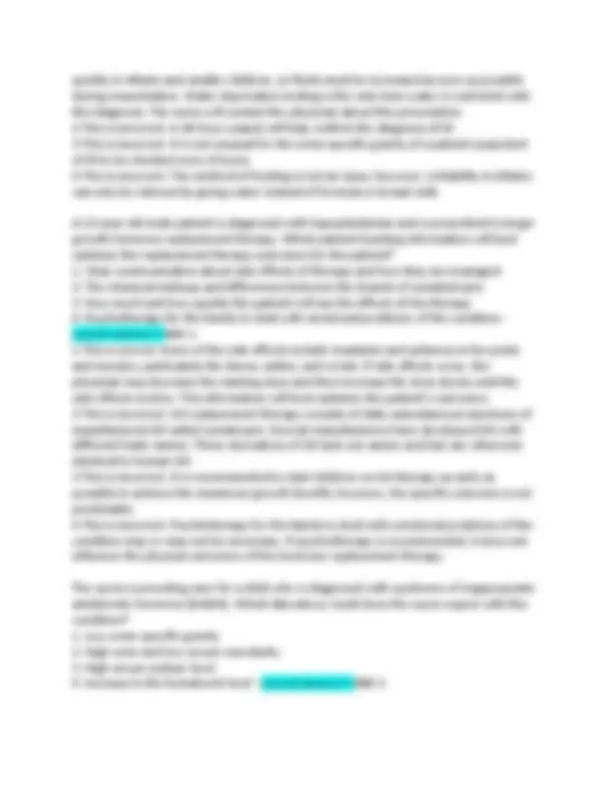
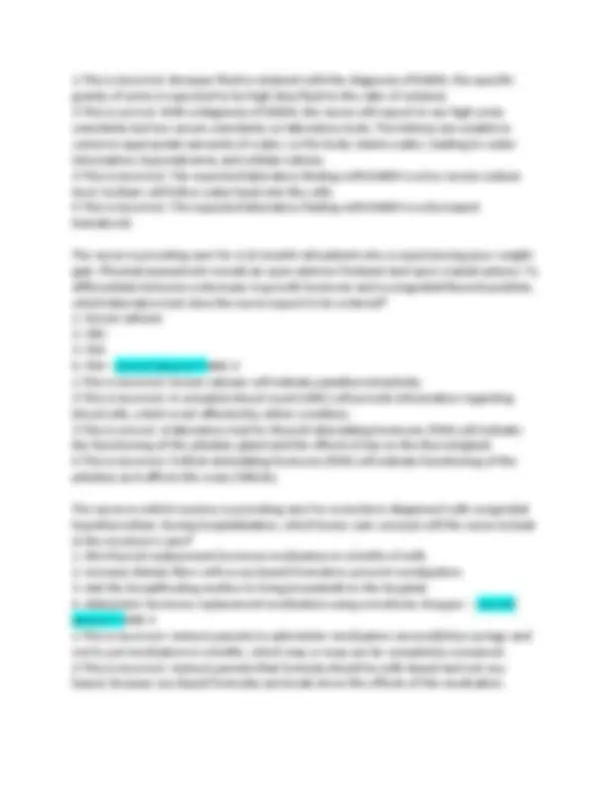
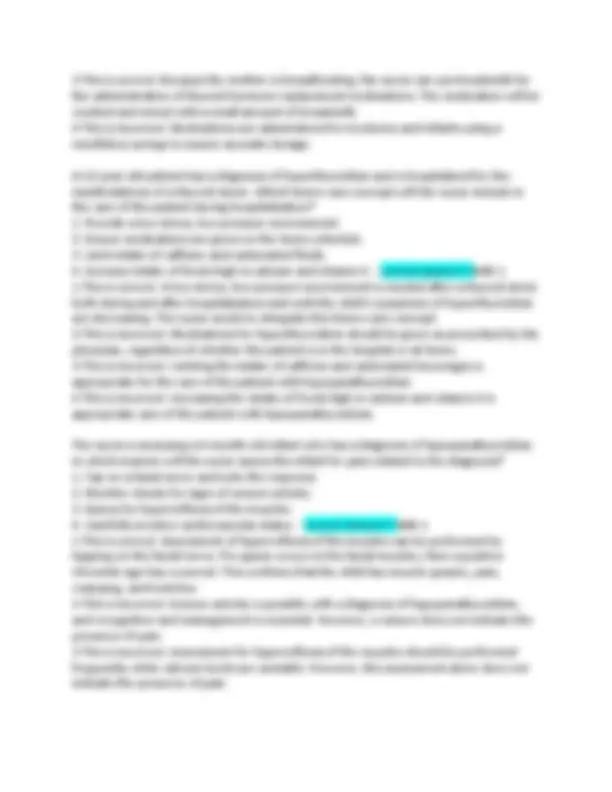
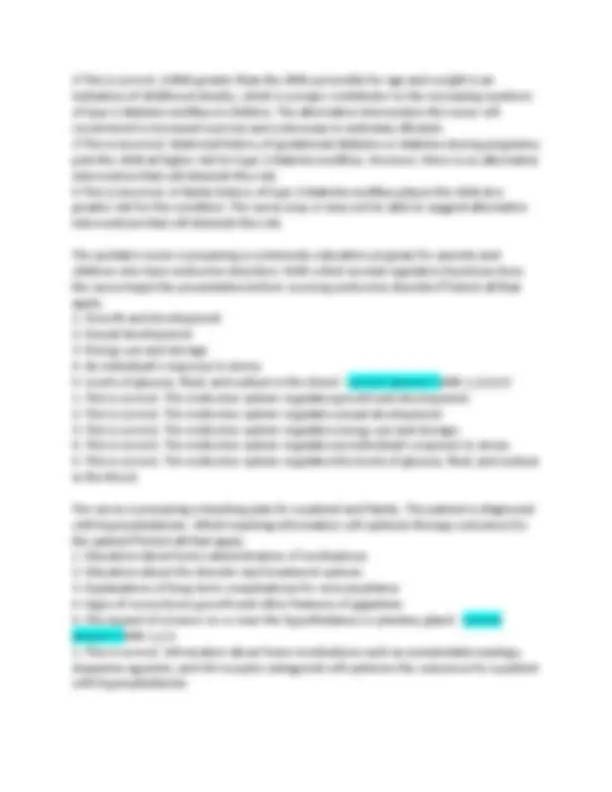
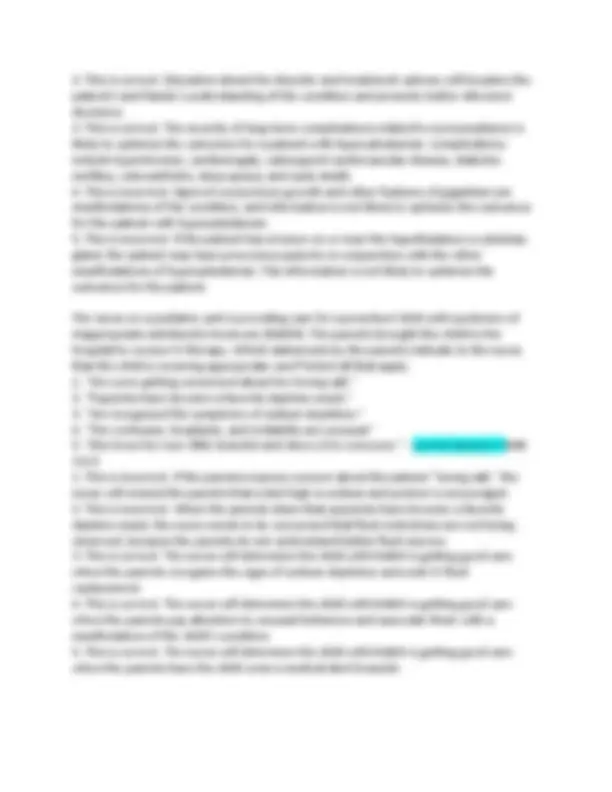
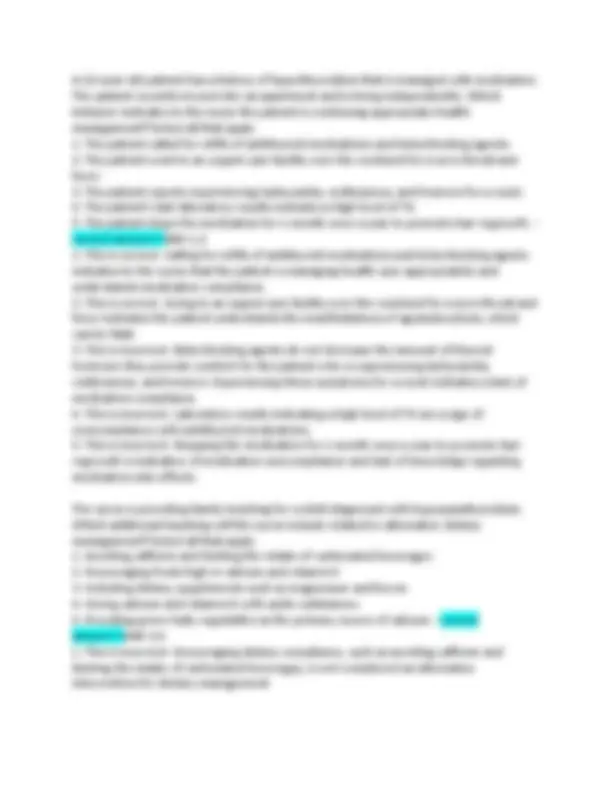
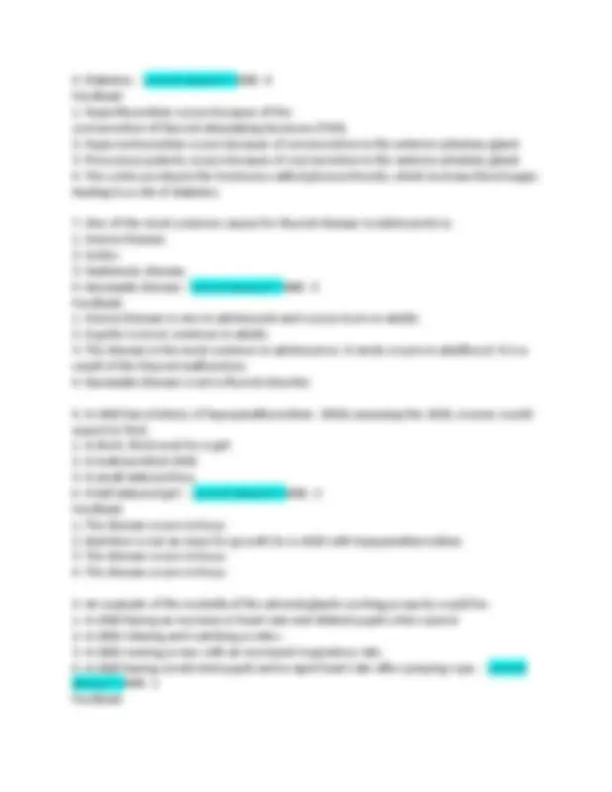
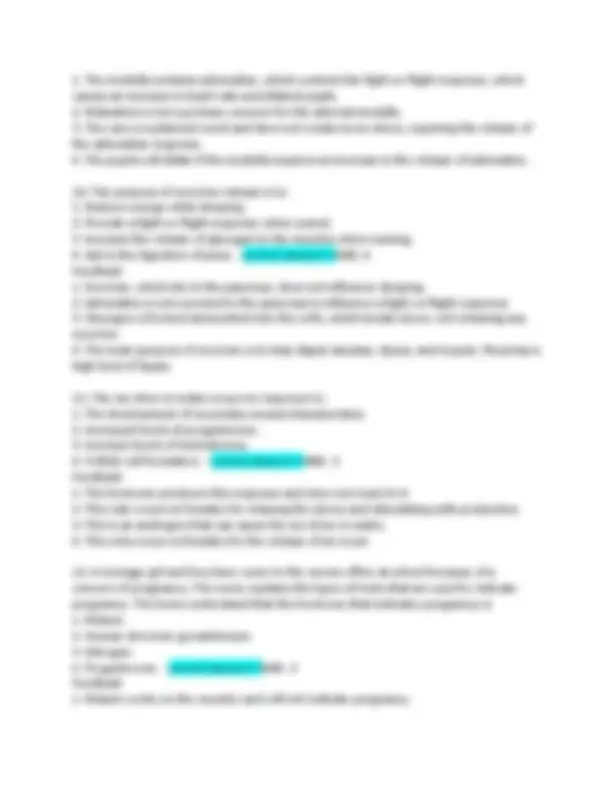
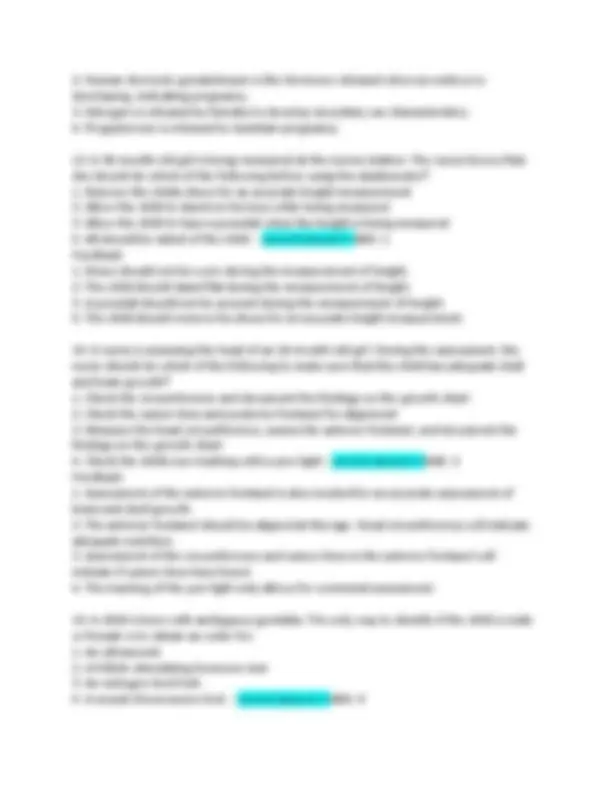
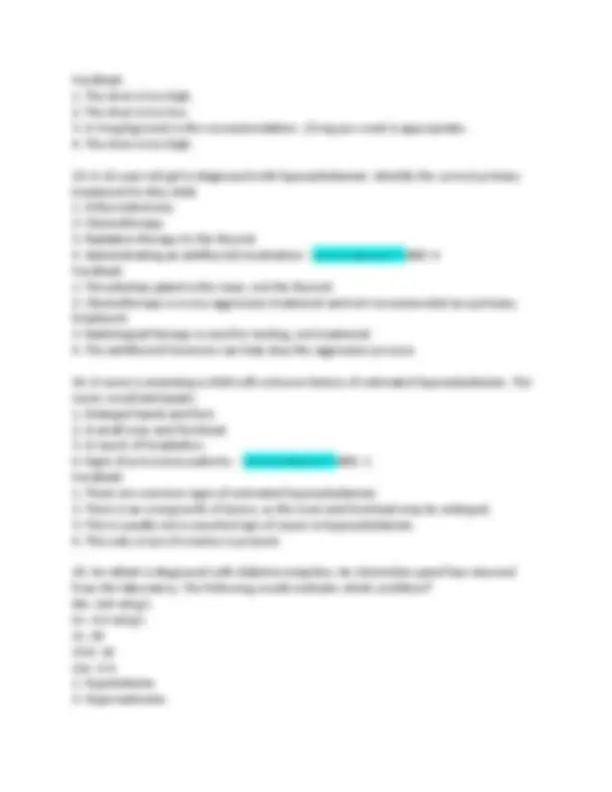
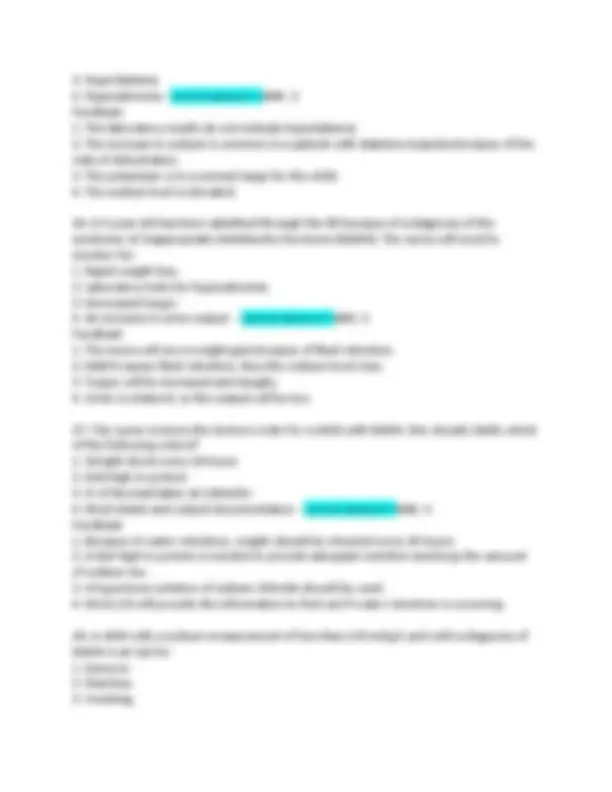
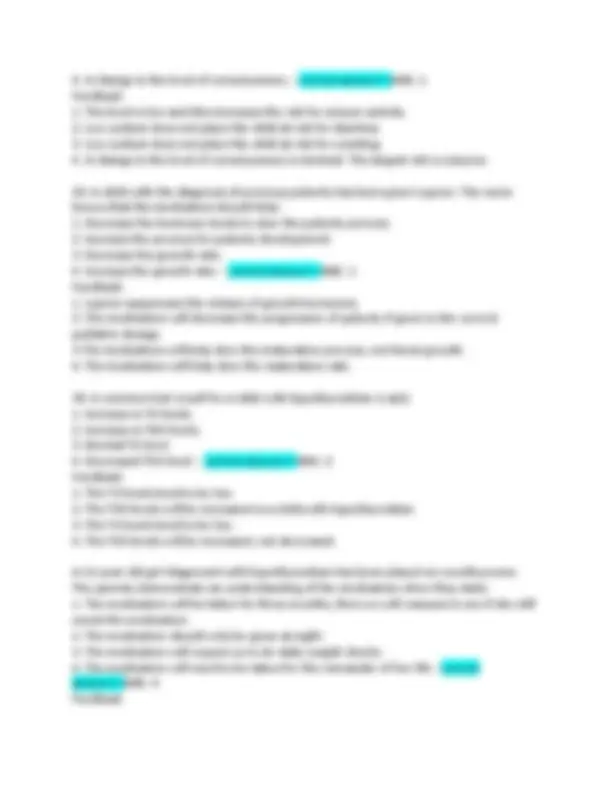
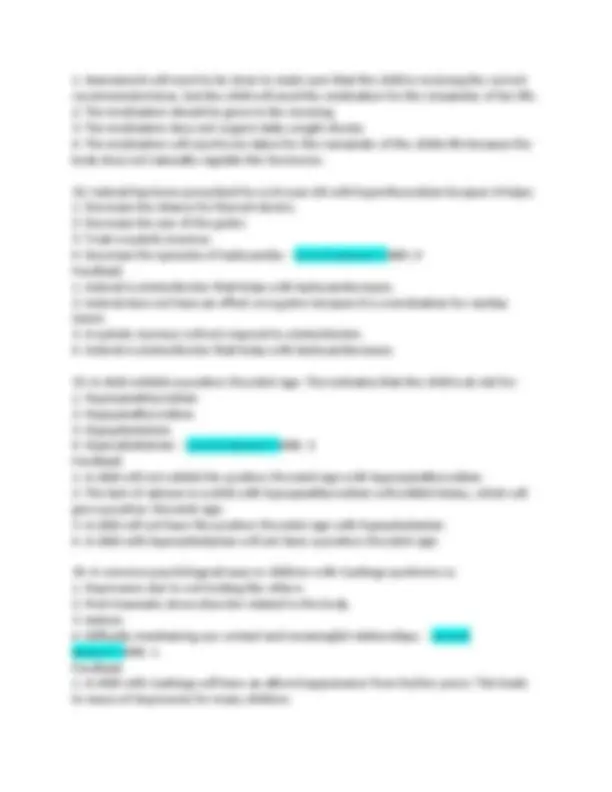
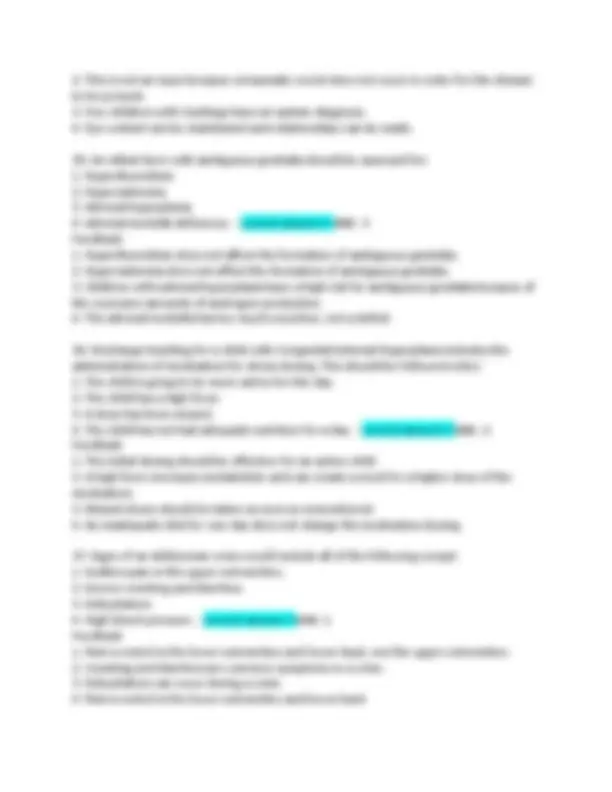
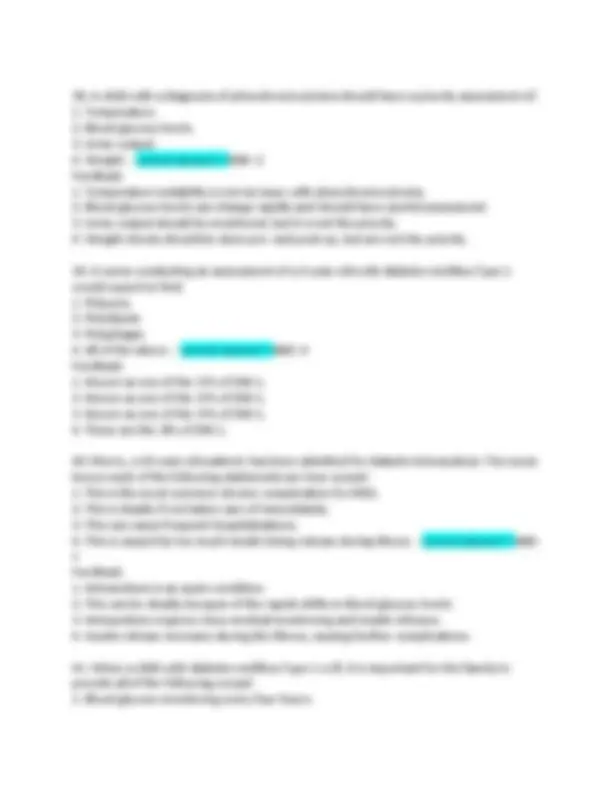
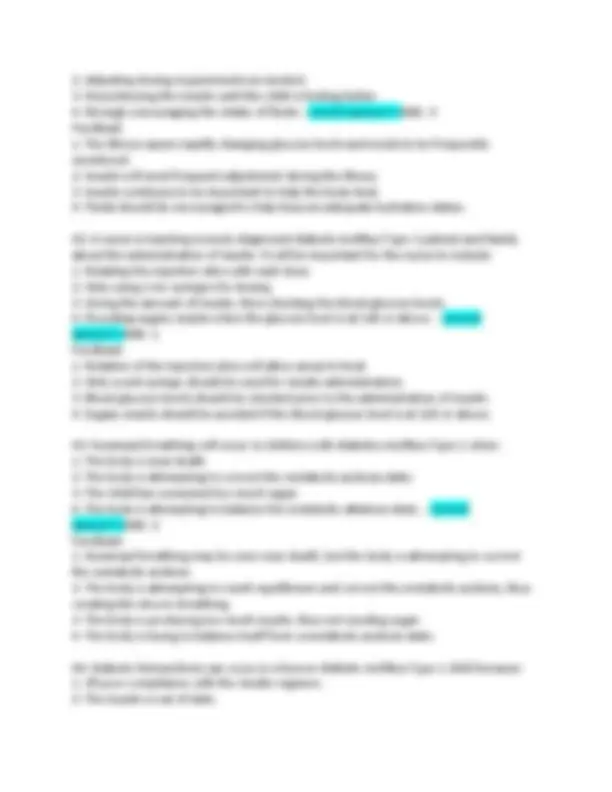
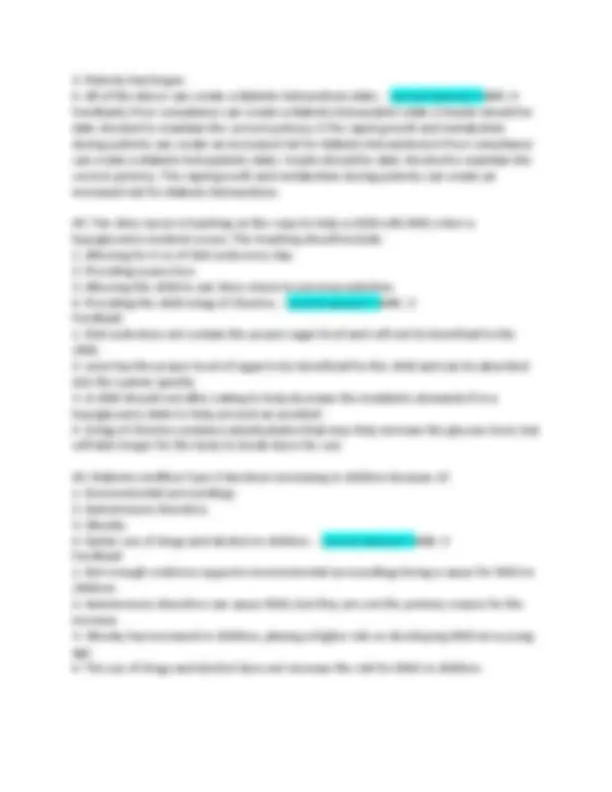
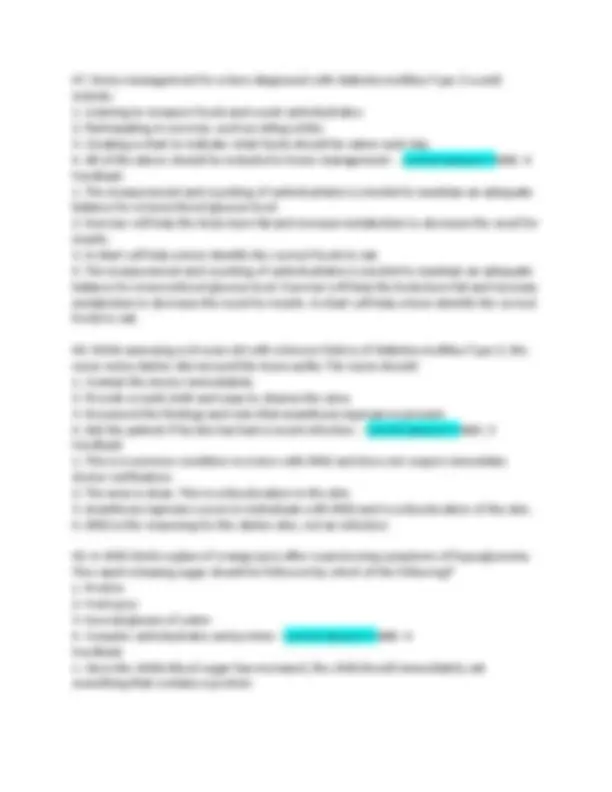
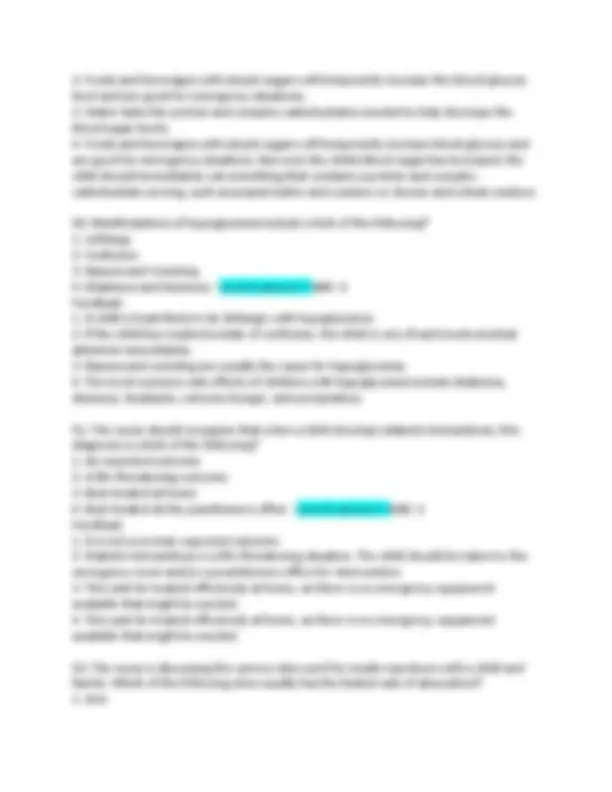
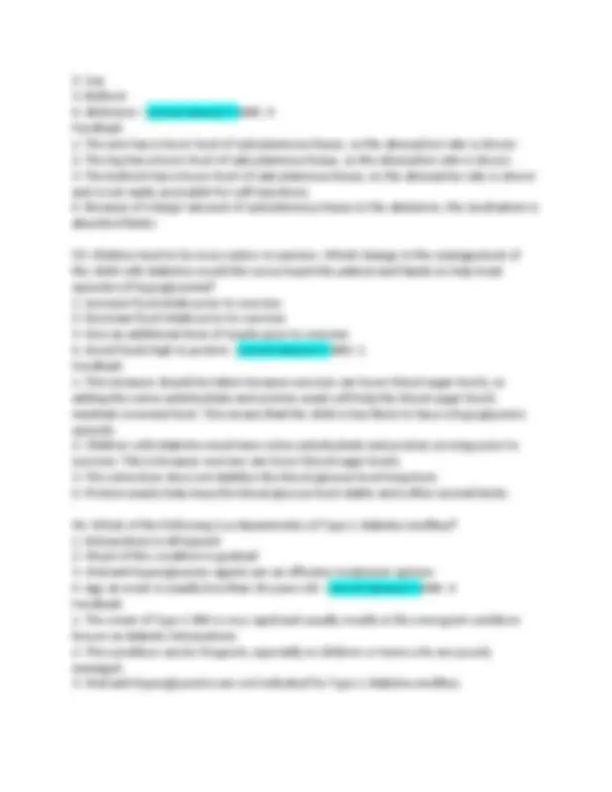
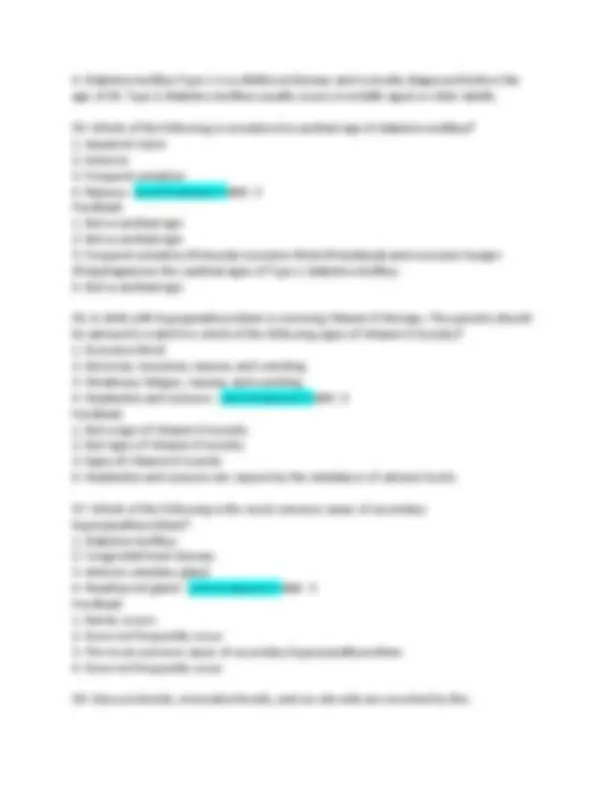
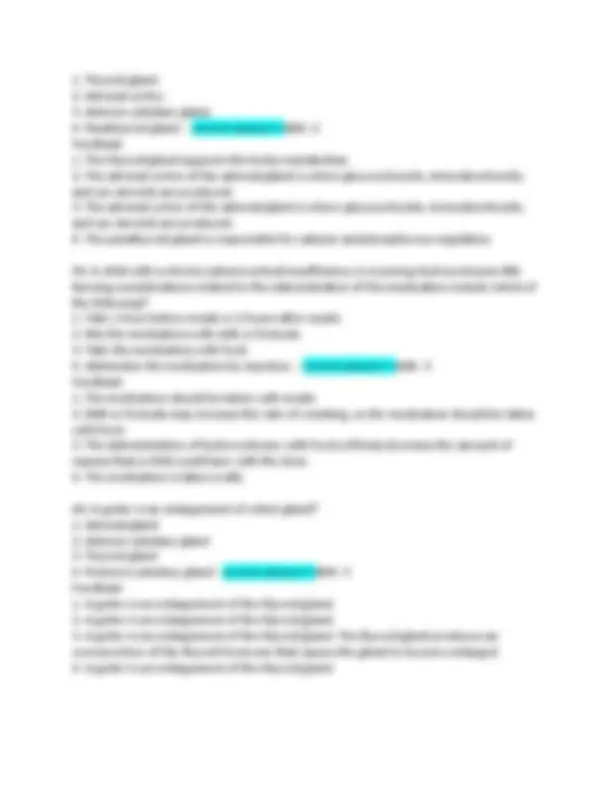
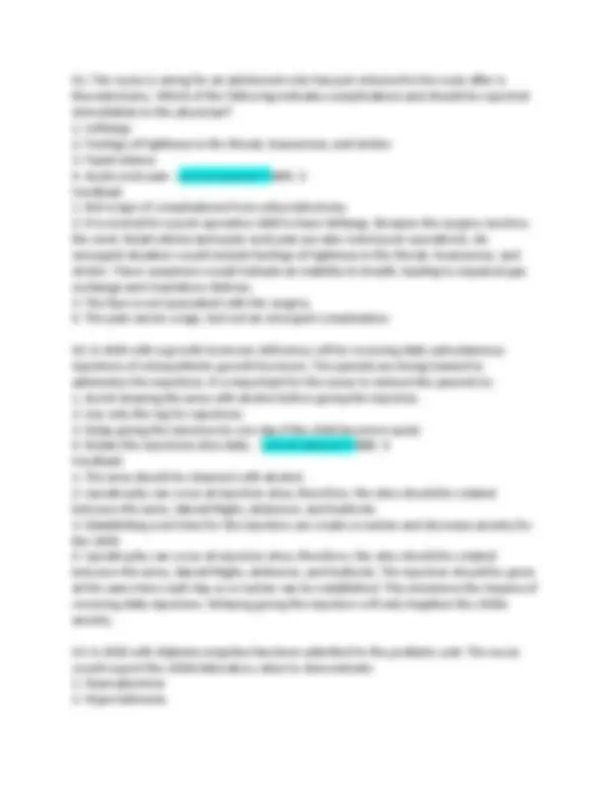
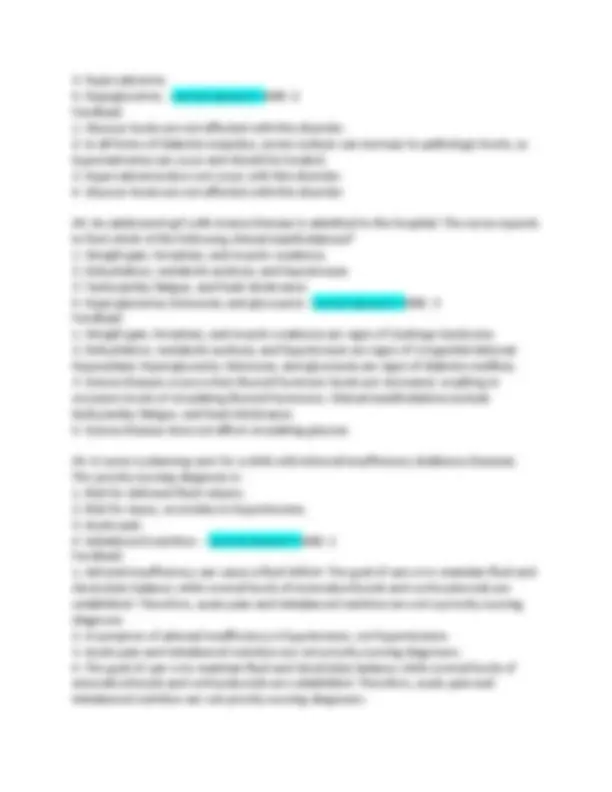
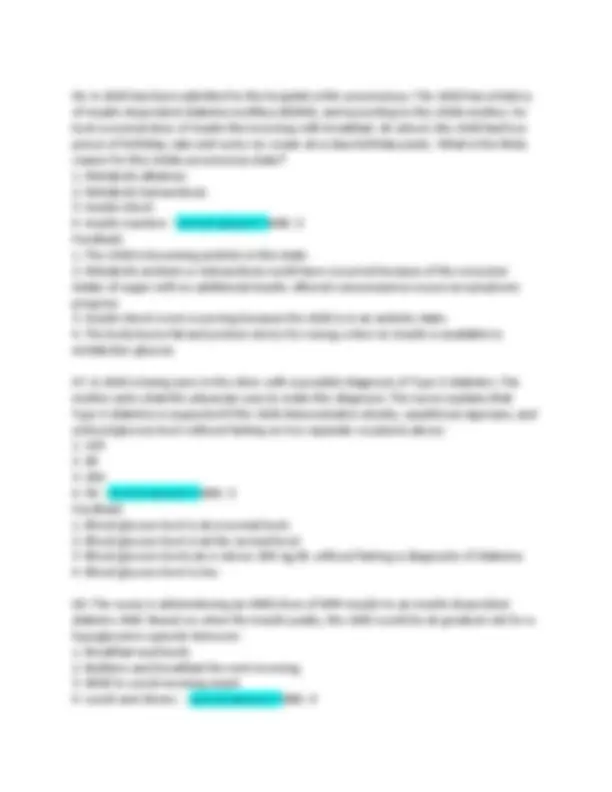
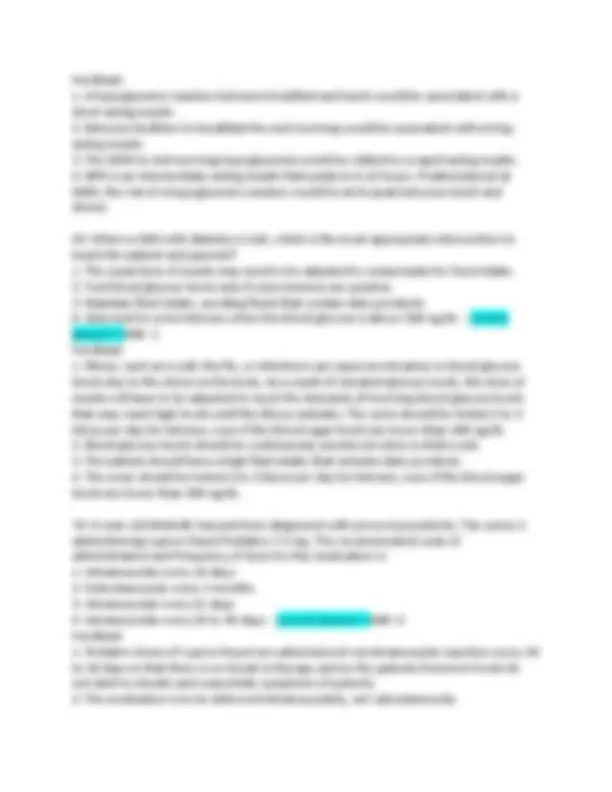

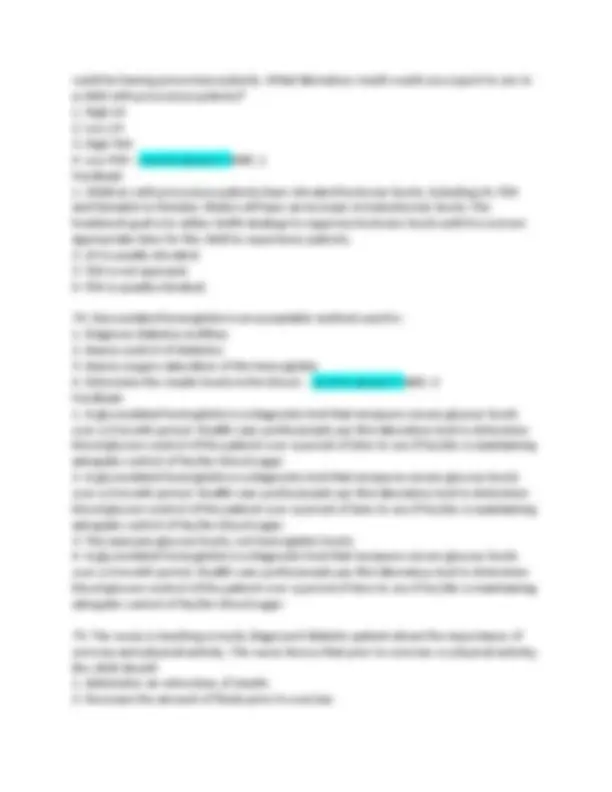
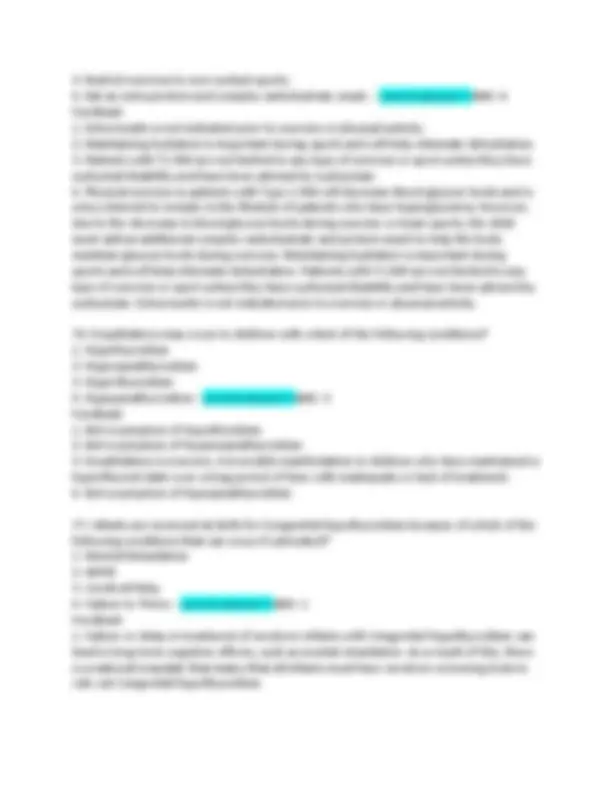
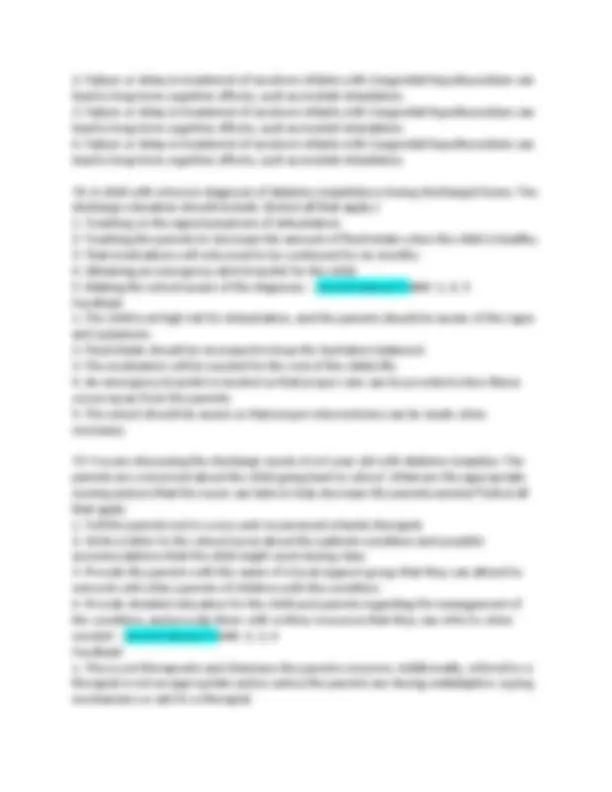
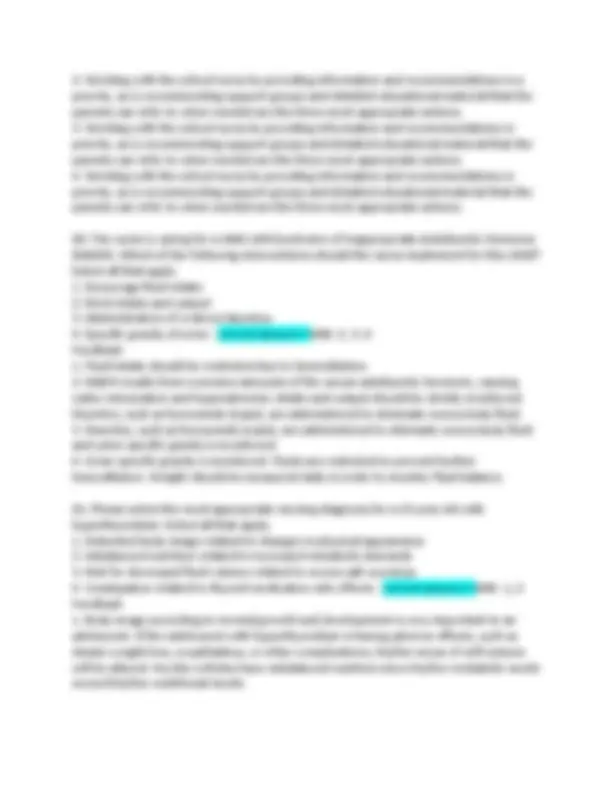
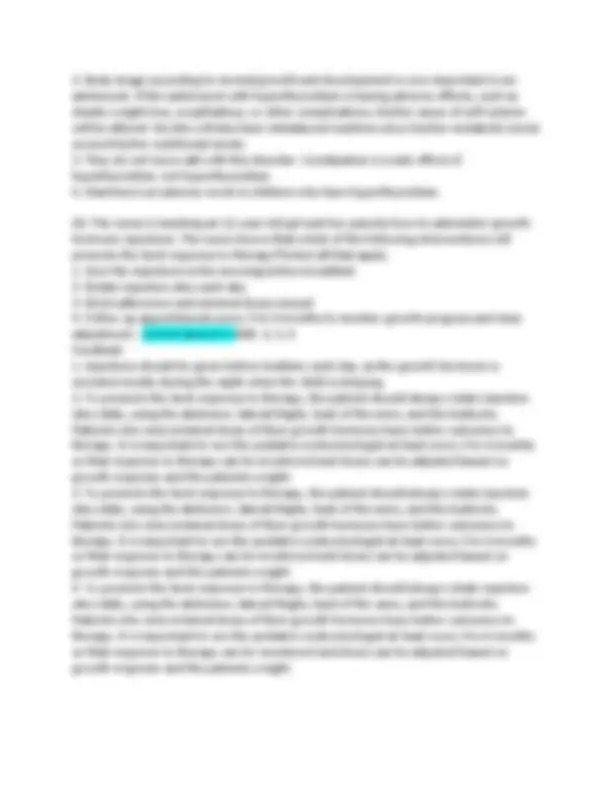
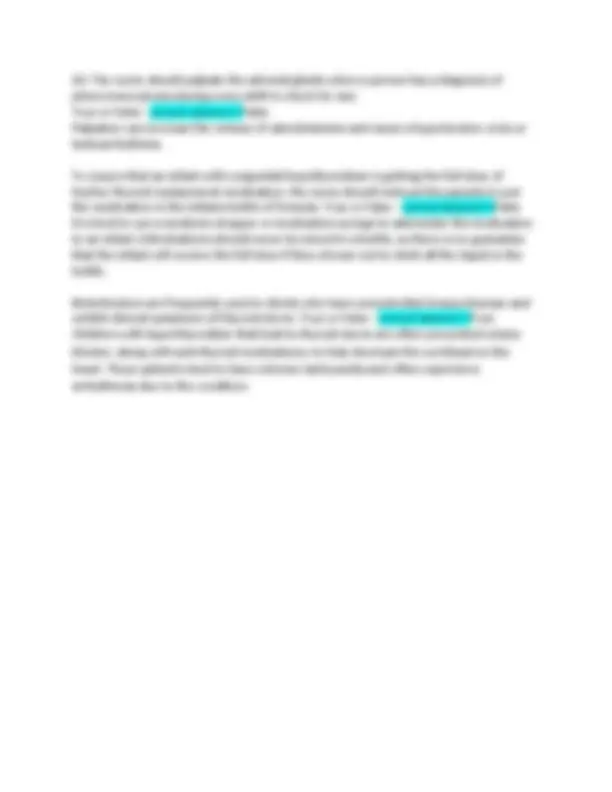


Study with the several resources on Docsity

Earn points by helping other students or get them with a premium plan


Prepare for your exams
Study with the several resources on Docsity

Earn points to download
Earn points by helping other students or get them with a premium plan
Community
Ask the community for help and clear up your study doubts
Discover the best universities in your country according to Docsity users
Free resources
Download our free guides on studying techniques, anxiety management strategies, and thesis advice from Docsity tutors
1. The school nurse is teaching a middle-school class about the hormones that regulate body functions. Which information provided by the nurse is accurate? 1. Hormones are chemicals secreted by endocrine glands. 2. Hormones act specifically on the glands that produce them. 3. Hormones react with negative feedback as levels decline. 4. Hormones are made from proteins, fats, and carbohydrates. - correct answer>>ANS 1 1 This is correct. It is true that hormones are chemicals produced by the endocrine glands and circulated in the bloodstream to another part of the body. 2 This is incorrect. Hormones do not act specifically on the glands that produce them; they activate or inhibit cells in the target organs and act as messengers to those organs. 3 This is incorrect. Positive feedback occurs when hormone levels start to decline, causing the hypothalamus to secrete hormones that stimulate the pituitary gland to release hormones that then affect the target organ.
Typology: Exams
1 / 41

This page cannot be seen from the preview
Don't miss anything!


































1 This is incorrect. Because fluid is retained with the diagnosis of SIADH, the specific gravity of urine is expected to be high (less fluid to the ratio of solutes). 2 This is correct. With a diagnosis of SIADH, the nurse will expect to see high urine osmolarity but low serum osmolarity on laboratory tests. The kidneys are unable to conserve appropriate amounts of water, so the body retains water, leading to water intoxication, hyponatremia, and cellular edema. 3 This is incorrect. The expected laboratory finding with SIADH is a low serum sodium level. Sodium will follow water back into the cells. 4 This is incorrect. The expected laboratory finding with SIADH is a decreased hematocrit. The nurse is providing care for a 12-month-old patient who is experiencing poor weight gain. Physical assessment reveals an open anterior fontanel and open cranial sutures. To differentiate between a decrease in growth hormone and a congenital thyroid problem, which laboratory test does the nurse expect to be ordered?
3 This is correct. Because the mother is breastfeeding, the nurse can use breastmilk for the administration of thyroid hormone replacement medications. The medication will be crushed and mixed with a small amount of breastmilk. 4 This is incorrect. Medications are administered to newborns and infants using a needleless syringe to assure accurate dosage. A 12-year-old patient has a diagnosis of hyperthyroidism and is hospitalized for the manifestations of a thyroid storm. Which home-care concept will the nurse include in the care of the patient during hospitalization?
3 This is incorrect. In an Addisonian crisis, time is lost by calling parents for permission to have the adolescent transported for acute medical attention. 4 This is correct. The nurse will administer Solu-Cortef IM, because the patient is unconscious. Careful assessment of signs and symptoms of hypovolemic shock in the severely dehydrated patient is critical. IV fluids are needed as quickly as possible; the paramedics are notified immediately. The nurse is planning a teaching session for a 10-year-old patient and the patient's parents. The patient is newly diagnosed with type 1 diabetes mellitus. Which is the most important topic for the nurse to cover?
2 This is correct. A BMI greater than the 85th percentile for age and weight is an indication of childhood obesity, which is a major contributor to the increasing numbers of type 2 diabetes mellitus in children. The alternative intervention the nurse will recommend is increased exercise and a decrease in sedentary lifestyle. 3 This is incorrect. Maternal history of gestational diabetes or diabetes during pregnancy puts the child at higher risk for type 2 diabetes mellitus. However, there is no alternative intervention that will diminish this risk. 4 This is incorrect. A family history of type 2 diabetes mellitus places the child at a greater risk for the condition. The nurse may or may not be able to suggest alternative interventions that will diminish this risk. The pediatric nurse is preparing a community education program for parents and children who have endocrine disorders. With which normal regulatory functions does the nurse begin the presentation before covering endocrine disorders? Select all that apply.
A 19-year-old patient has a history of hyperthyroidism that is managed with medication. The patient recently moved into an apartment and is living independently. Which behavior indicates to the nurse the patient is continuing appropriate health management? Select all that apply.
Feedback
Children grow the most while sleeping, so giving the injections at night will help promote growth with the bodys normal system.
Growth occurs the most at night, thus the injections should be given prior to bedtime.
A common blood test that should be done for a child with questionable celiac disease is:
TSH.
FSH.
Antigliadin antibodies.
ACTH. - correct answer>>ANS: 3 Feedback
Checks the function of the thyroid
Indicates follicle stimulation
Screens for celiac disease
Indicates hormone deficiencies
The nurse is discussing follow-up visits with the family of a boy using growth hormone therapy. The parents demonstrate understanding of the teaching with which statement?
We will need to track his height every week and record it for the doctor.
We will need to have follow-up visits every 3 to 4 months to measure progress.
Our next visit will be in one year to assess growth.
He will need to watch his weight closely and provide the record at the next visit. - correct answer>>ANS: 2 Feedback
Height will change gradually, so measurements on a weekly basis are not recommended.
Measurements and visits every 3 to 4 months will allow for growth to occur and for the medical provider to assess for needed changes.
Growth patterns should be monitored more closely while taking a growth hormone to make changes to the medication as needed.
Weight gain is not an issue with hormone replacement therapy and can be monitored at the medical provider visits.
A nurse has received an order for the growth hormone somatropin to be given to a 14 - year-old boy. The correct weekly dose for a 110 pound boy is:
20 mg.
10 mg.
15 mg.
25 mg. - correct answer>>ANS: 3